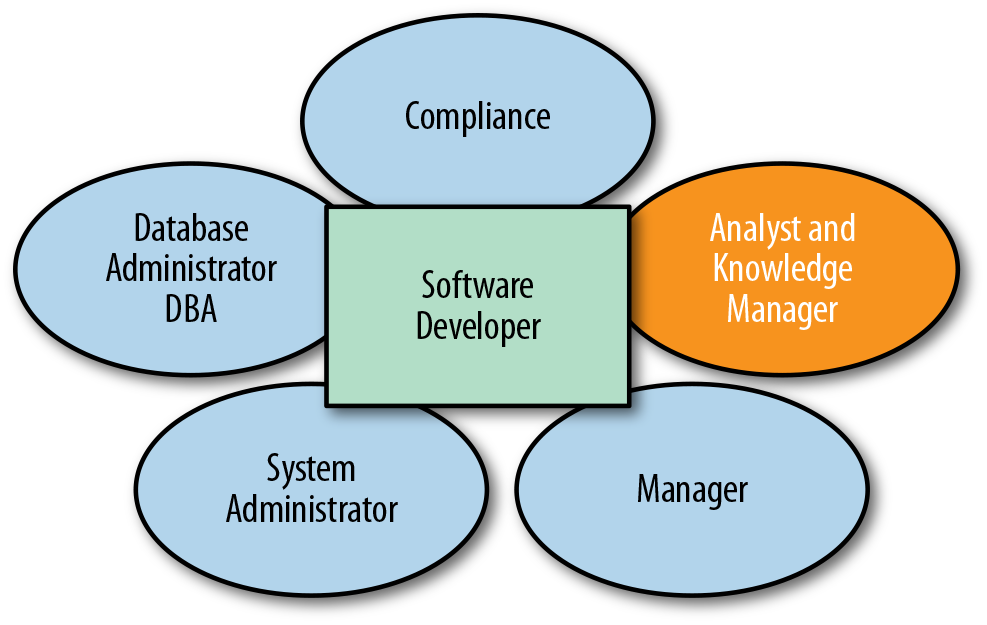Chapter 7. What the Analyst Wants
Data-driven developers need to understand that data in their systems might have a lifecycle that extends far beyond the flow of transactions for which their specific application might be immediately responsible. Whether analysts are a part of your team or separated by several organizational divisions (Figure 7-1), the data they work with is the same data that powers the rest of the organization. Implementation artifacts can distort this, but the data characteristics important to those professions can and should be considered (see Figure 7-2).

Figure 7-1. Software developer and analyst

Figure 7-2. Data loses context
Knowledge management is even broader in scope. Introduction of this topic can lead many organizations to consider triple stores for the storage and retrieval of semantic data. Semantic technology is transformational in that it allows an organization to ask and answer questions effectively at a higher level. Ontological inquiries (both philosophical and information-science based) such as Who are our real customers? can create much more effective analytic answers to business questions such as How do we increase our perceived value in the eyes of our customers?
Once again, this describes the conditions needed for small, nimble groups ...
Get Defining Data-Driven Software Development now with the O’Reilly learning platform.
O’Reilly members experience books, live events, courses curated by job role, and more from O’Reilly and nearly 200 top publishers.

